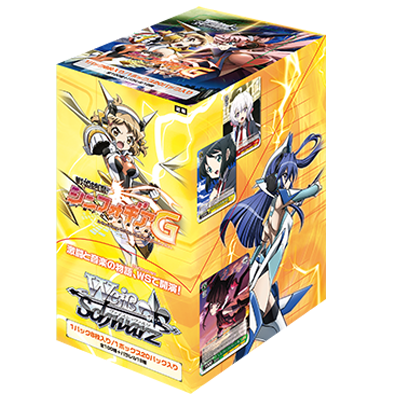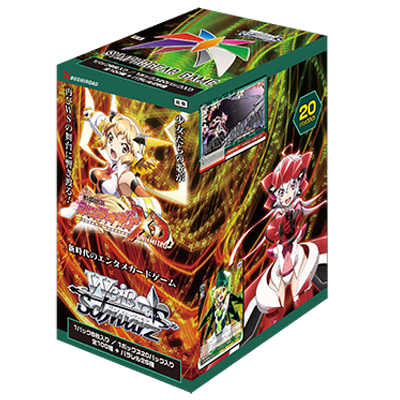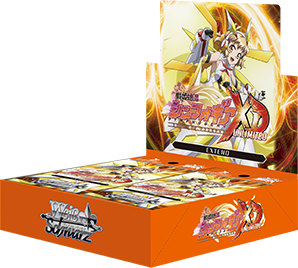Senki Zesshō Symphogear, or simply Symphogear, is a series focused around a handful of girls who acquire and use the powers of the ancient weapon, Symphogears, to face against the invading and mysterious monsters known as the Noise. Symphogear debuted as a manga written by Akifumi Kaneko and Noriyasu Agematsu in 2011. Ever since, the series has been adapted into its own anime with five seasons.


In the story, Hibiki Tachibana, the poster character for the first volume, goes to a concert featuring Kanade Amou and Tsubasa Kazanari. After a special incident occurring at the stadium, Hibiki is entrusted with the power of the mysterious weapon named Symphogear that combines the power of fighting and music as she combats the mysterious Noise that appear to seemingly consume human lives. Symphogear itself is a unique weapon that is empowered by song and transfers that same energy to allow the user to combat opponents. As the series pans out, Hibiki meets new allies, learns more about herself, and uncovers the true secrets behind the Symphogear and the Noise she faces.
Symphogear originally came out with its own trial deck in 2012. It was soon accompanied by its own booster based off the first season, Symphogear. A year later, Symphogear G was released which featured the new characters of Maria and the two “twins”, Shirabe and Kirika. In 2015, Symphogear GX released which empowered the girls with the new Ignite Module mechanic. In 2017, to commemorate the release of the new mobile game, Symphogear XDU, its accompanying booster came out with various arts for the girls based on the same game. In 2019, Symphogear XDU Extend came out, a reprint of the previous set, Symphogear XDU along with some other functional alter reprints of older cards in the series. Additionally, during that same year, the set for the fourth season of the series came out with AXZ which featured re-combinations of the original pairings. In 2021, the series has received its most latest support with XV where the girls are further empowered with their original pairs.
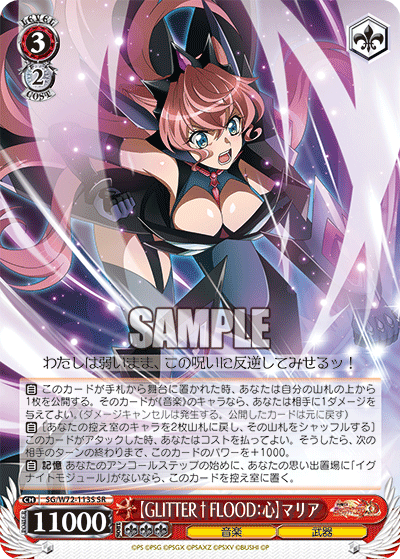
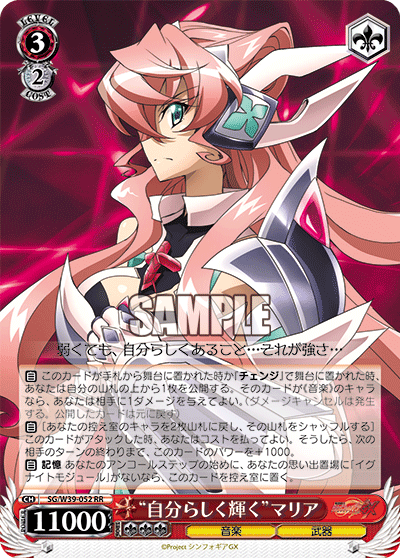
SG/W39-052RR “自分らしく輝く”マリア (right)
I would like to make an interesting note regarding that of Symphogear XDU’s reprints. Aside from some slight changes in wording, some cards were reprinted but renamed and slightly edited like the Maria shown above. These cards function essentially the same, but because the naming is different, you may run both cards alongside each other if you’d like while ignoring the four-of rule if you wish.

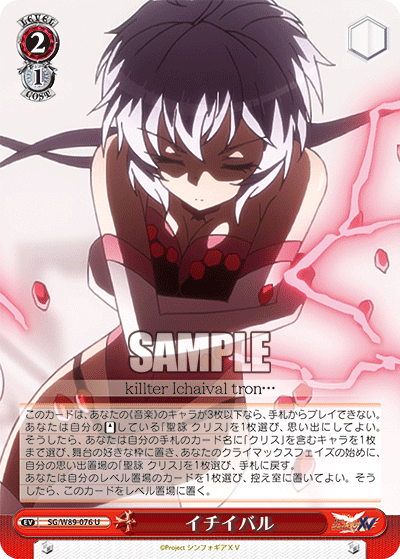
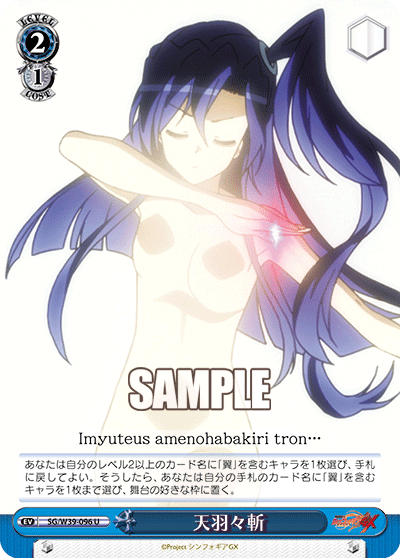
SG/W89-076U イチイバル (center)
SG/W39-096U 天羽々斬 (right)
One of the core mechanics of Symphogear is a CHANGE mechanic through the use of specialized events. CHANGE is the mechanic of transform a lower level card into a higher level card (although, the keyword itself isn’t printed as much on cards anymore). Even though the Symphogear CHANGE event has seen its own changes throughout the years, the mechanic remains the same. You choose a specific character or lower level character and replace it with a specific level three or a different card.
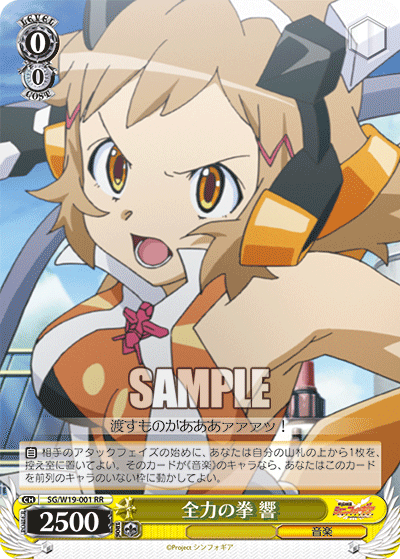

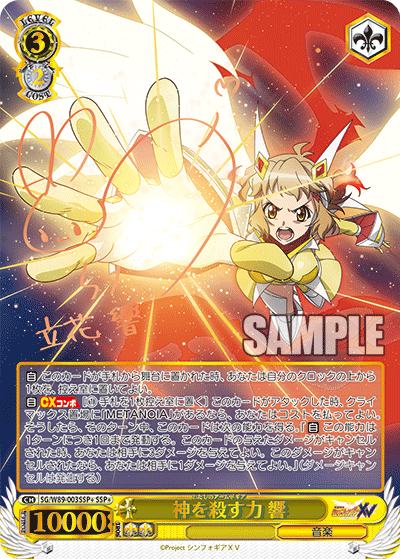
SG/W89-009R 渚の散歩道 未来 (center)
SG/W89-003SSP+-SSP+ 神を殺す力 響 (right)
Rather than explain the various archetypes and deck profiles by sets, I will be opting to explain the pairings and occasional sub-decks. Beginning with Hibiki Tachibana and Miku Kohinata, the two girls are best friends who are never separated from each other. Hibiki also debuted with the mill runner profile, a powerful board retaining tool at the time of its release.
Hibiki and Miku have gone through several changes throughout the years. Miku herself has mostly been a supportive role to Hibiki just like she is in the series. Hibiki’s combos have been powerful, high-burst, and very aggressive designs that seek to punch holes into your opponent’s clock. Symphogear is a very name-centred series despite having the global trait of Music (音楽). In the original set, Miku’s colour was red but quickly swapped to yellow at the start of Symphogear G and has remained yellow since.

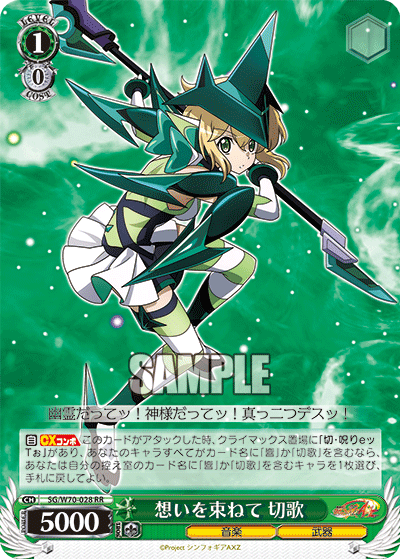
As mentioned earlier, with the debut of Symphogear AXZ, the series decided to try swapping partners. In the case of Hibiki, her partner became that of Kirika Akatsuki. All these pairings featured the keyword RESONATE [共鳴] mechanic which required you to have specific cards in hand to trigger abilities. Overall, to my understanding, these alternative partner builds have never been too popular due to lack of support from the previous sets and the following set of XV. Given that the series was heavily name-focused, the loss of the original partners very much decreased the available card-pool for the decks’ themes while also forcing the use of mundane profiles.
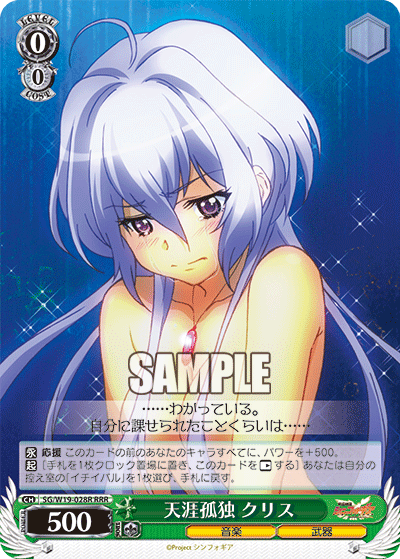

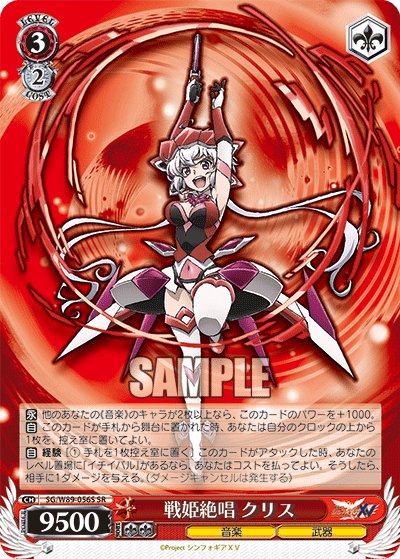
SG/W89-054SSP+-SSP+ アマルガム クリス (center)
SG/W89-056S-SR 戦姫絶唱 クリス (right)
The only exception to the partner rule, Yukine Chris, has never really had a prominent partner throughout the series. Her cards are generally stand-alone with her operating as a solo agent. Interestingly, it took her almost a decade to receive her first and only level three healer. Similar to Miku, Chris had a colour redesign when she swapped from green to red starting in Symphogear G and has remained as red since.

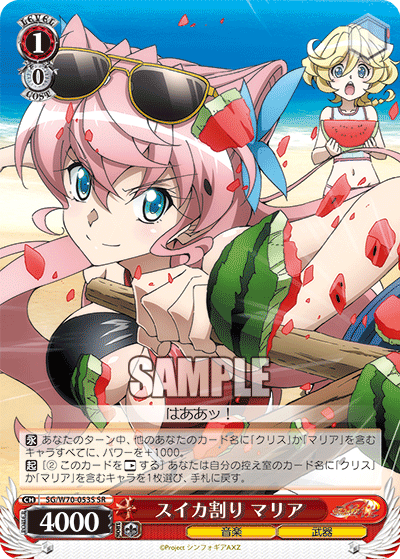
Similar to the Hibiki and Kirika repairing, Chris received her new partner with Maria Cadenzavna Eve. There are a few resonate abilities similar to Hibiki and Kirika for the most part, but their partnership was mostly based on having additional power with just having name-traits. The two did share a climax that had a combo with both a Chris and a Maria card. Maria herself is an odd-ball which I’ll be explaining further in her own section.


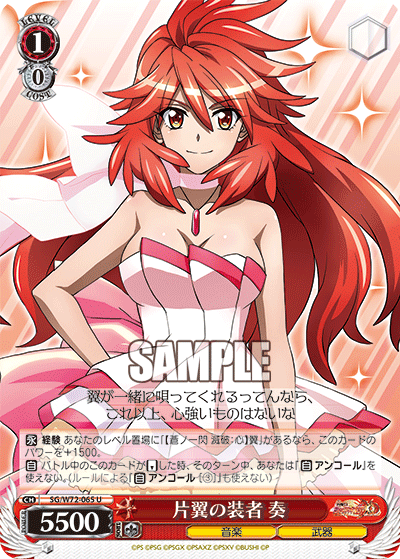
SG/W89-055SP-SP アマルガム マリア (center)
SG/W72-065U 片翼の装者 奏 (right)
Kazanari Tsubasa has had the most of number of unique partners throughout the series. She debuted in the original set with Kanade. Their pairing was focused mainly on having field power and setting up defensive walls. As the series progressed, Tsubasa changed her partner to Maria which created interesting combinations involving the two having linkage attacks where they would swap with one another.


Probably my favourite re-pairing of the lot, Tsubasa and Tsukuyomi Shirabe were an interestingly powerful pairing in my opinion. Tsubasa’s filters and Shirabe’s supports proved to be quite beneficial to each other. Their finisher was arguably the most powerful out of the lot having the ability to resonate that also carries a minus soul ability outside of its own finishing combo.
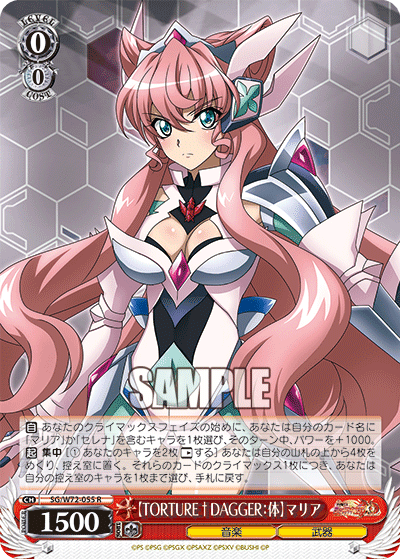


SG/W72-058R “アガートラーム”マリア (center)
SG/W72-059SP-SP “アガートラーム”セレナ (right)
Maria, as mentioned before, was rather strange. Maria’s debut in Symphogear G left her without a partner similar to Chris. However, compared to Chris, Maria had a mix of several partners including Chris herself. Her introduced partner in Symphogear XDU was that of her sister, Serena. Maria’s cards have always been odd because she relied on multiple partners, changing her style of gameplay to suit them accordingly.

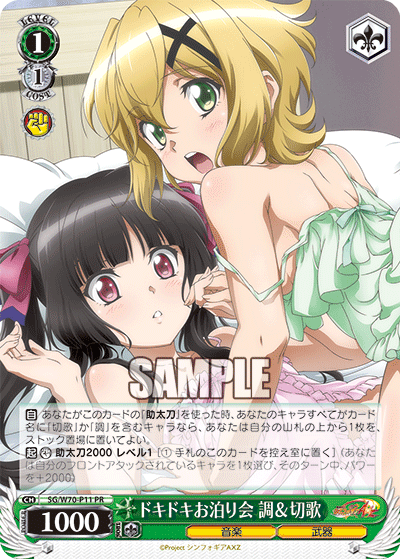

SG/W70-P11PR ドキドキお泊り会 調&切歌 (center)
SG/W89-027RR アマルガム 切歌 (right)
The “twins”, Kirika and Shirabe, always carried a knack for keeping each other on the stage. Releasing in their debut in Symphogear G, their original deck consisted of the SHIFT [シフト] and EXPERIENCE [経験] mechanics. Upon reaching that condition, they could be spawned together onto the field without the use of an event. As of Symphogear XV, both characters have been given their own respective event CHANGE events, allowing them to partake in the series’ core mechanic. Their finishers provide a pseudo-modular finish while also allowing you to spawn them in a chain on the field as long as you can pay their costs, resulting in a flooded field of early played Kirika(s) and Shirabe(s). The ban list, as of current, locks Kirika’s changer due to its dominance during XV’s era, so unfortunately, if you wish to play their deck, you’ll have to rely upon Shirabe’s instead.

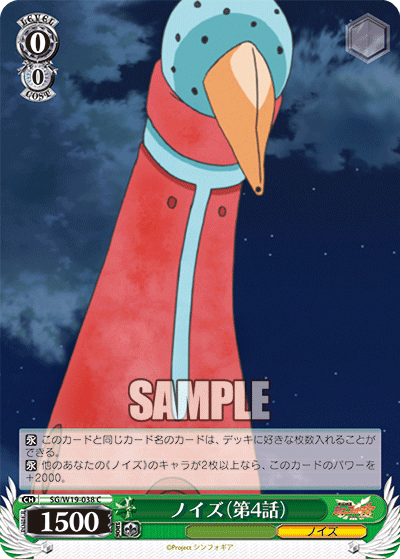
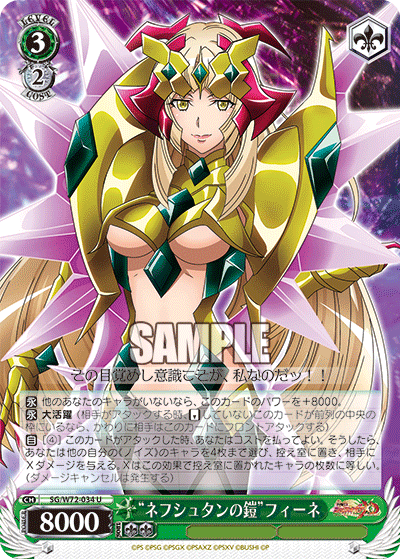
SG/W19-038C ノイズ(第4話)(center)
SG/W72-034U “ネフシュタンの鎧”フィーネ (right)
The Noise were originally supposed to be swarm cards with nothing else. The addition of Symphogear G and other sets provided more cards for the archetype, but overall, there was no distinction differentiating Noise from that of other army deck counterparts. The series, however, did provide Noise with a spawning event that was bondable with that of Fine that could summon and swarm your field with Noise (both audibly and physically). Symphogear G also gave the archetype some support with Dr. Well who could search up the event (which had been improved significantly) or other Noise support cards. With the release of Symphogear XDU, the series received its own finisher along with an early play combo that could be swarmed (orange is my boi).
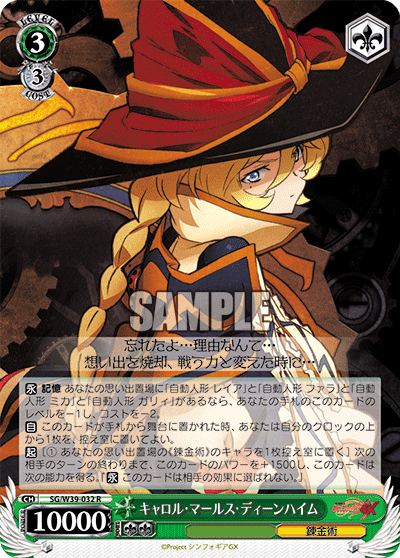
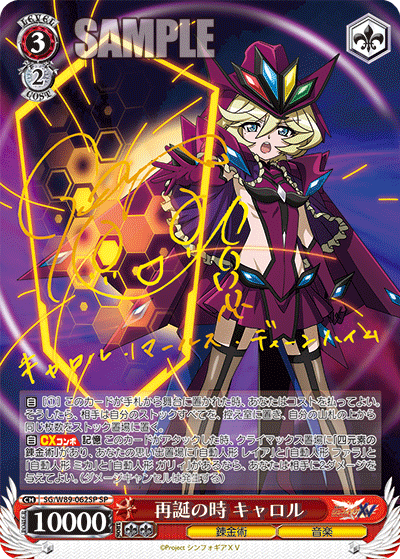
When it comes to Alchemist (錬金術) decks, the most common association is that of Carol above and her four Autoscorers, machines built by her to serve her needs. Carol and her friends debuted in Symphogear GX. Her original card featured an early play that could be reduced to a 2/1 in hand if you met her conditions of sending all her Autoscorers to memory. The Autoscorers themselves all carried their own unique abilities and were of different colours; however, they all shared the ability to be sent to memory in one way or another. With the release of Symphogear XV, the series gave updated Autoscorers and an additional new finisher to the deck.
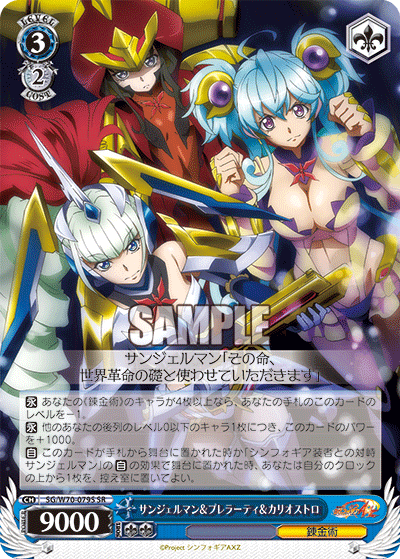
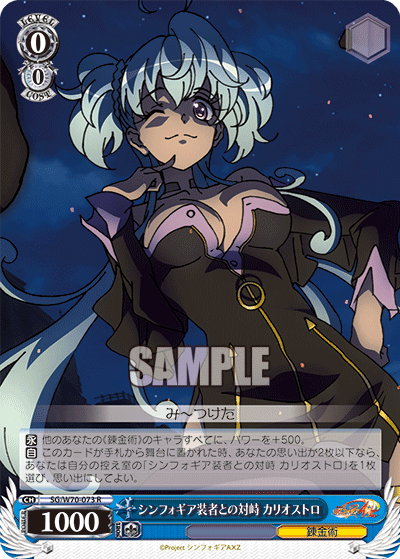
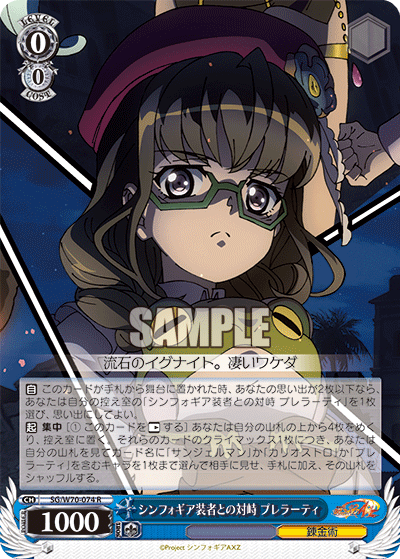
SG/W70-073R シンフォギア装者との対峙 カリオストロ (center)
SG/W70-074R シンフォギア装者との対峙 プレラーティ (right)
There is another Alchemist deck in the form of the trio that debuted in Symphogear XV. This alchemist group features members of the Bavarian Illuminati. The deck runs a memory engine where the goal is to send both the Cagliastro and Prelati shown above to memory to enable other cards’ effects. The deck is primarily blue but features some small supports in yellow. It is important to note that you can mix some of the cards from the other alchemist deck featuring Carol as they both use the same alchemist trait.
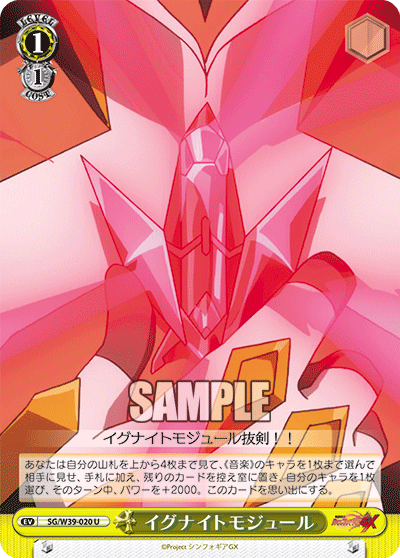
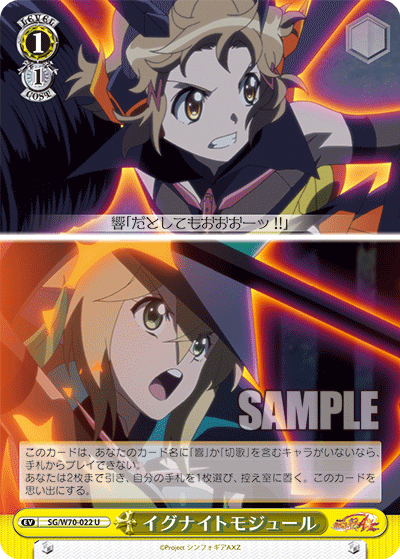
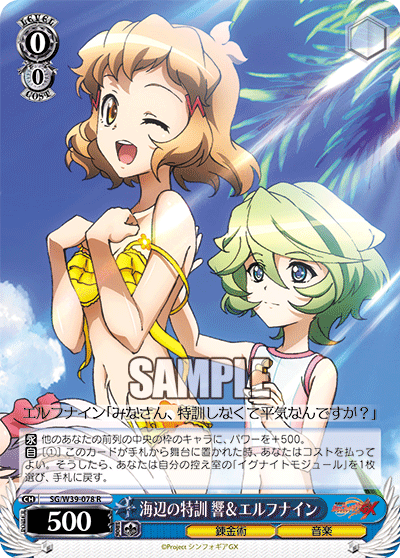
SG/W70-022U イグナイトモジュール (center)
SG/W39-078R 海辺の特訓 響&エルフナイン (right)
One final point will be made regarding a special mechanic introduced in Symphogear GX. The girls were given power-ups in the form of the Ignite Modules. Each girl carries her own specific module with their own unique effect. These Ignite Modules would be needed in memory to supplement the finishers in that same set. They can only currently be bonded to by two specific cards including the support above and another card. In Symphogear AXZ, the Ignite Modules were retrained with alternative forms to support the new partner shuffles. Additionally, Symphogear XDU also gave additional cards that also worked with the Ignite Module. The old and new versions can be run in conjunction with each other while also obeying the maximum four-of rule.
If you’re a fan of singing girls in the midst of battle, Symphogear might be straight up your alley. Make sure to keep in mind the set’s core mechanic. Transform the Sympho-girls into their upgraded versions through unlocking their Symphogears. May the power of music drive you forward.


